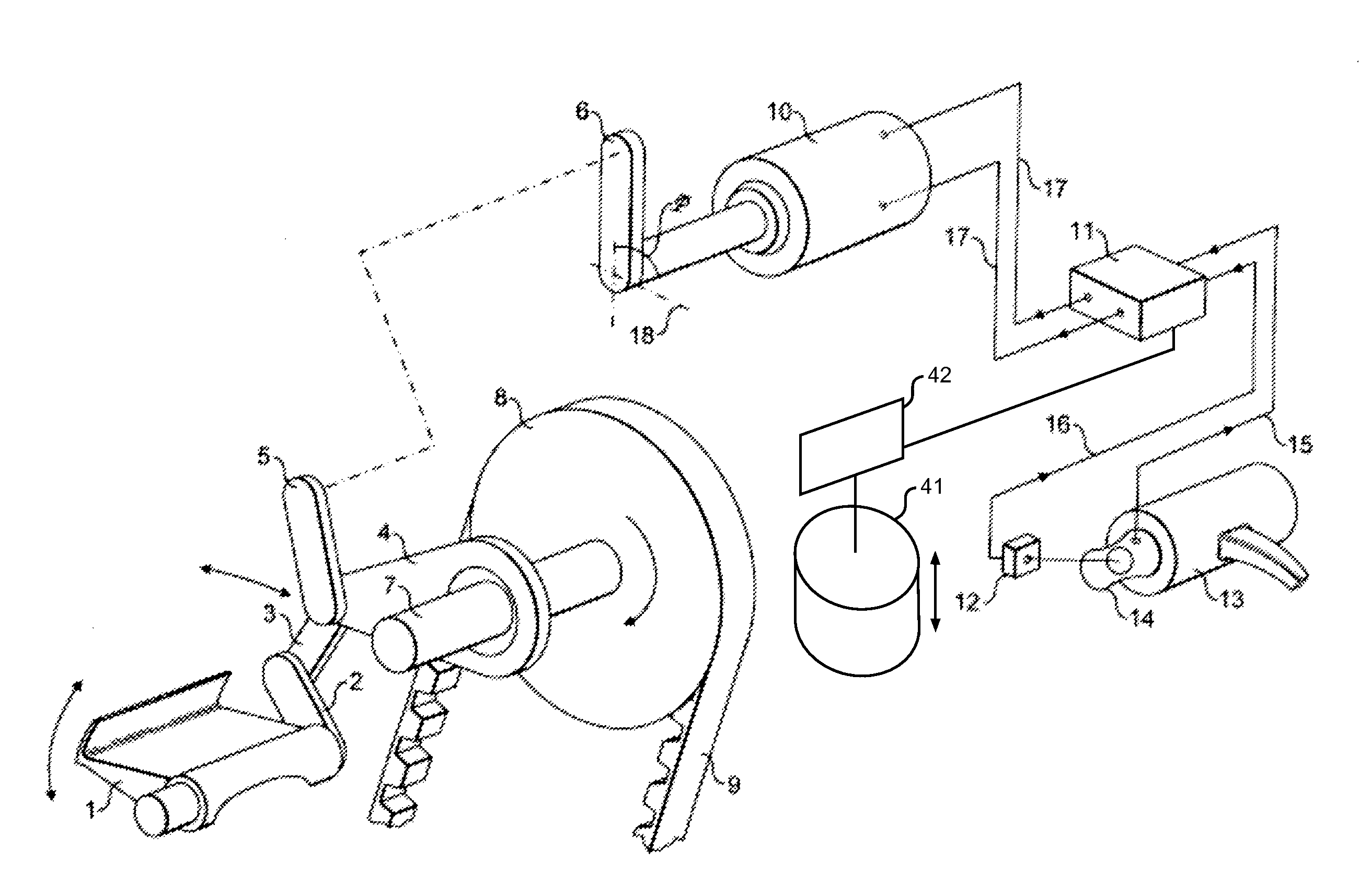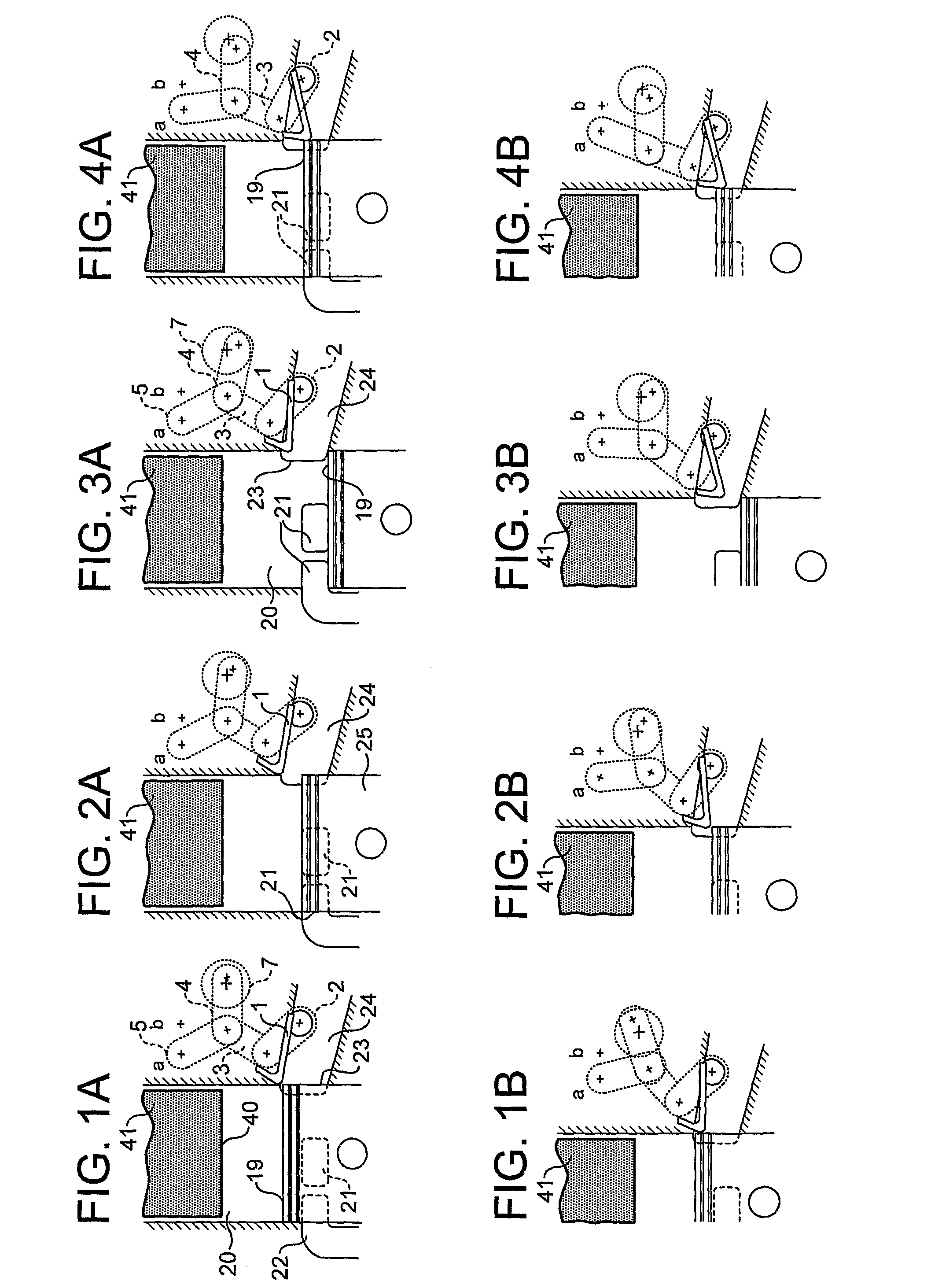Two-stroke internal combustion engine with variable compression ration and an exhaust port shutter
a two-stroke, internal combustion engine technology, applied in the direction of engine components, engine controllers, cylinders, etc., can solve the problems of reducing the operating range of the engine for such a reduction, affecting the performance of the engine, and affecting the efficiency of the engine, so as to facilitate the introduction of the two-stroke engine, widen the operating range, and reduce the effect of nox generation using auto ignition
- Summary
- Abstract
- Description
- Claims
- Application Information
AI Technical Summary
Benefits of technology
Problems solved by technology
Method used
Image
Examples
Embodiment Construction
[0026]FIGS. 1A to 4A show a high speed / high load operation condition of the engine. FIG. 1A shows a piston 19, a cylinder 20, a plurality of inlet ports 21, inlet passage 22, an exhaust port 23 and an exhaust passage 24. Operable in the exhaust passage to vary the effective area of the exhaust port 23 is an shutter 1, operated by a mechanism including first link 2, second link 3, third link 4, fourth link 5 and crankshaft 7. The fourth link 5 is connected to a servo motor (not shown in FIG. 1, but shown in FIG. 5 and described later in the specification) by fifth link 6. The piston 19 is connected via a conventional gudgeon pin and connecting rod (not shown) to an output crankshaft (not shown). The output crankshaft is connected by the pulley belt to the crankshaft 7.
[0027]The cylinder 20 is defined in part by a movable end surface 40 provided by a ringed junk head 41 slidable axially along the cylinder 20. The junk head 41 is movable to vary the compression ratio in the cylinder 20...
PUM
 Login to View More
Login to View More Abstract
Description
Claims
Application Information
 Login to View More
Login to View More - R&D
- Intellectual Property
- Life Sciences
- Materials
- Tech Scout
- Unparalleled Data Quality
- Higher Quality Content
- 60% Fewer Hallucinations
Browse by: Latest US Patents, China's latest patents, Technical Efficacy Thesaurus, Application Domain, Technology Topic, Popular Technical Reports.
© 2025 PatSnap. All rights reserved.Legal|Privacy policy|Modern Slavery Act Transparency Statement|Sitemap|About US| Contact US: help@patsnap.com



